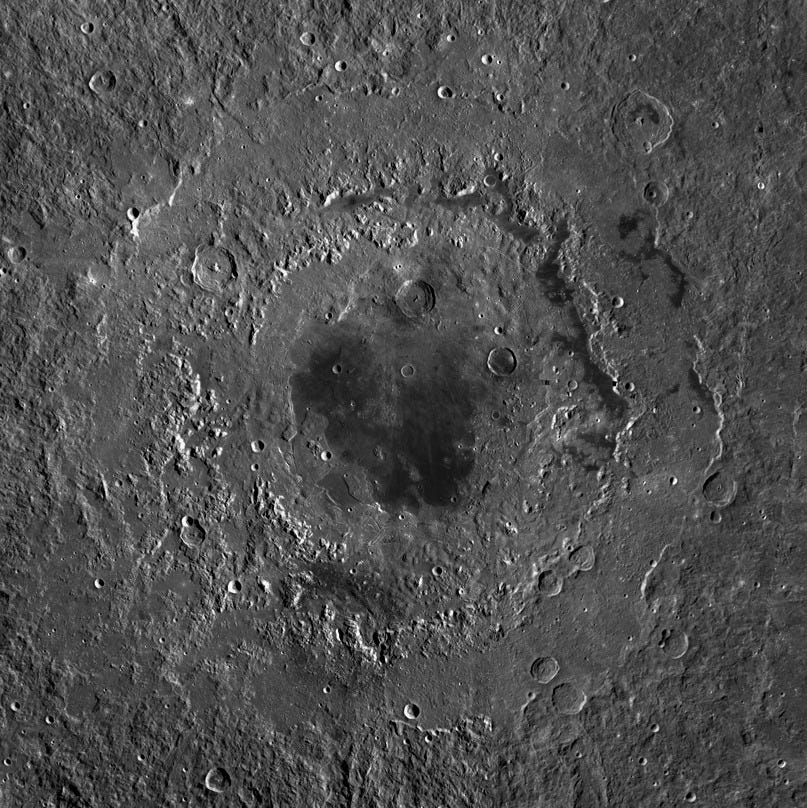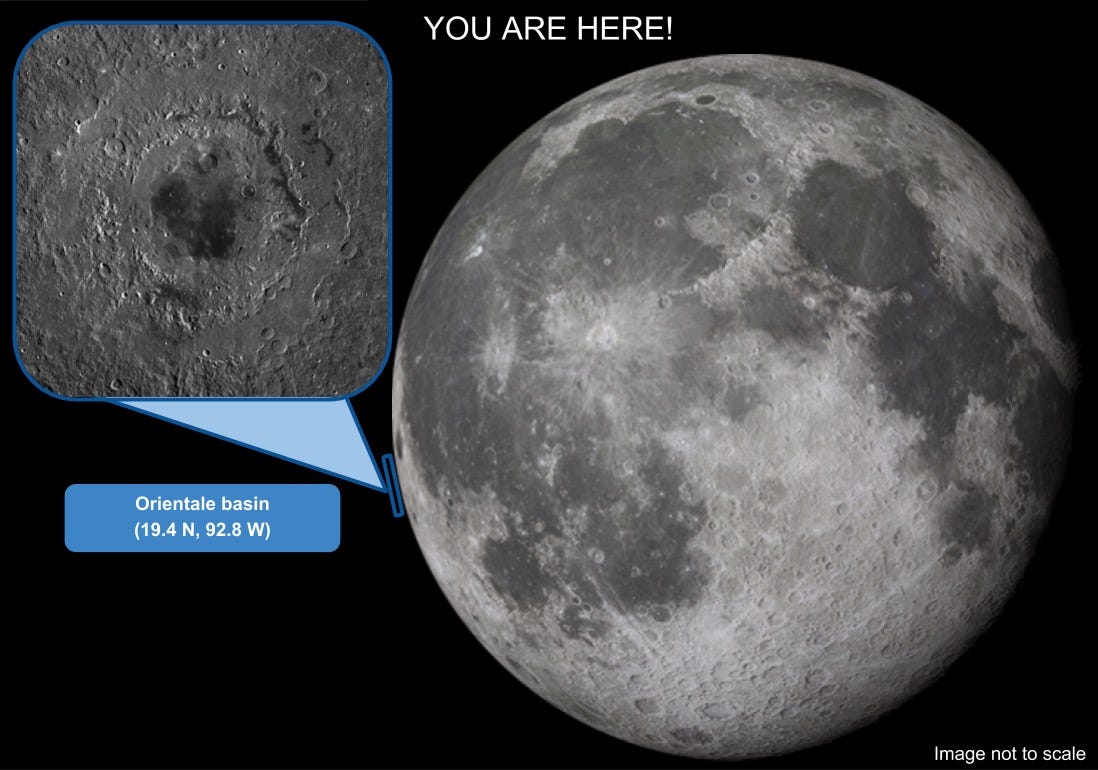A huge multi-ring impact basin on the Moon
The outstanding crater of Orientale.
Seen here is the striking multi-ring impact basin stretching 930 kilometers in diameter, called Mare Orientale.

All of the large mare areas (dark, solidified lava plains) on the Moon are actually part of deep basins. These basins are massive impact craters formed during the time of Late Heavy Bombardment period in the solar system. During this period (~4.1 to 3.8 billion years ago), large asteroid collisions with all planets (and moons) were running rampant.
Lo and behold, a ~64 km asteroid hurtling through space at ~15 km/s impacted the Moon 3.8 billion years ago and crafted the outstanding Orientale basin, the youngest of the large lunar impact basins.
The impact caused ripples in the lunar crust, resulting in the formation of the three concentric rings, as seen in the image. Ejected material from the impact has been seen to extend as long as 500 kilometers from the place. What intrigued me the most about the ejecta is spotting numerous crater chains, similar in appearance to the previously covered Catena Davy. I've pointed two such crater chains in the image below, can you spot more?

What is peculiar about Orientale is that unlike other basins, it is only partially covered in mare basaltic lava, leaving its internal structure still visible. As you can see, the mare areas are mostly confined to within the innermost ring.
Landing in the exposed structure of Orientale basin and studying it is key to understanding formation of multi-ring basins, determining the exact age of the basin by sampling, and help constrain the chronology of events across the solar system.
Orientale basin lies on the extreme western edge of the Moon's nearside, making it very difficult to spot. As the Moon undergoes libration however, Orientale occasionally turns slightly more towards Earth, becoming a little discernible.

